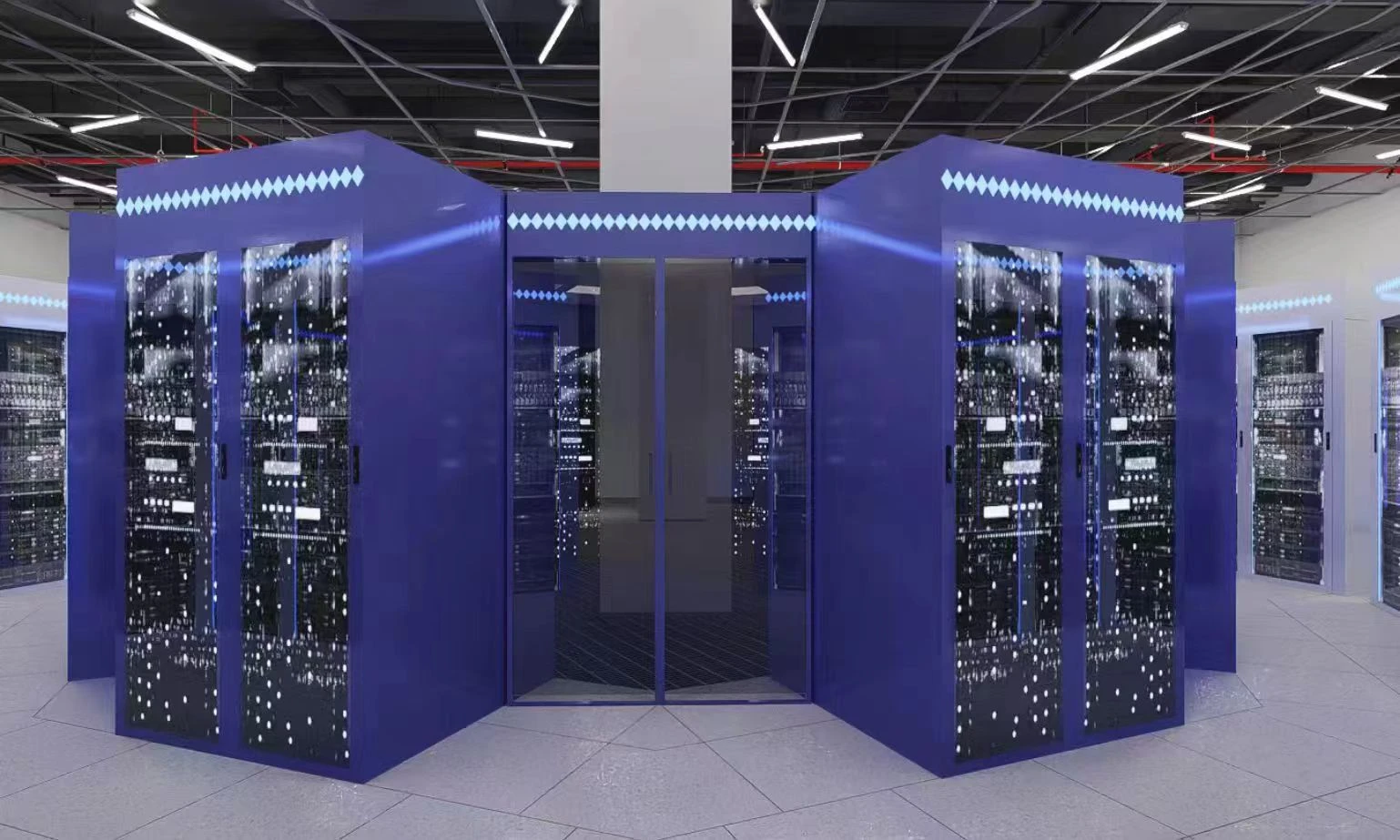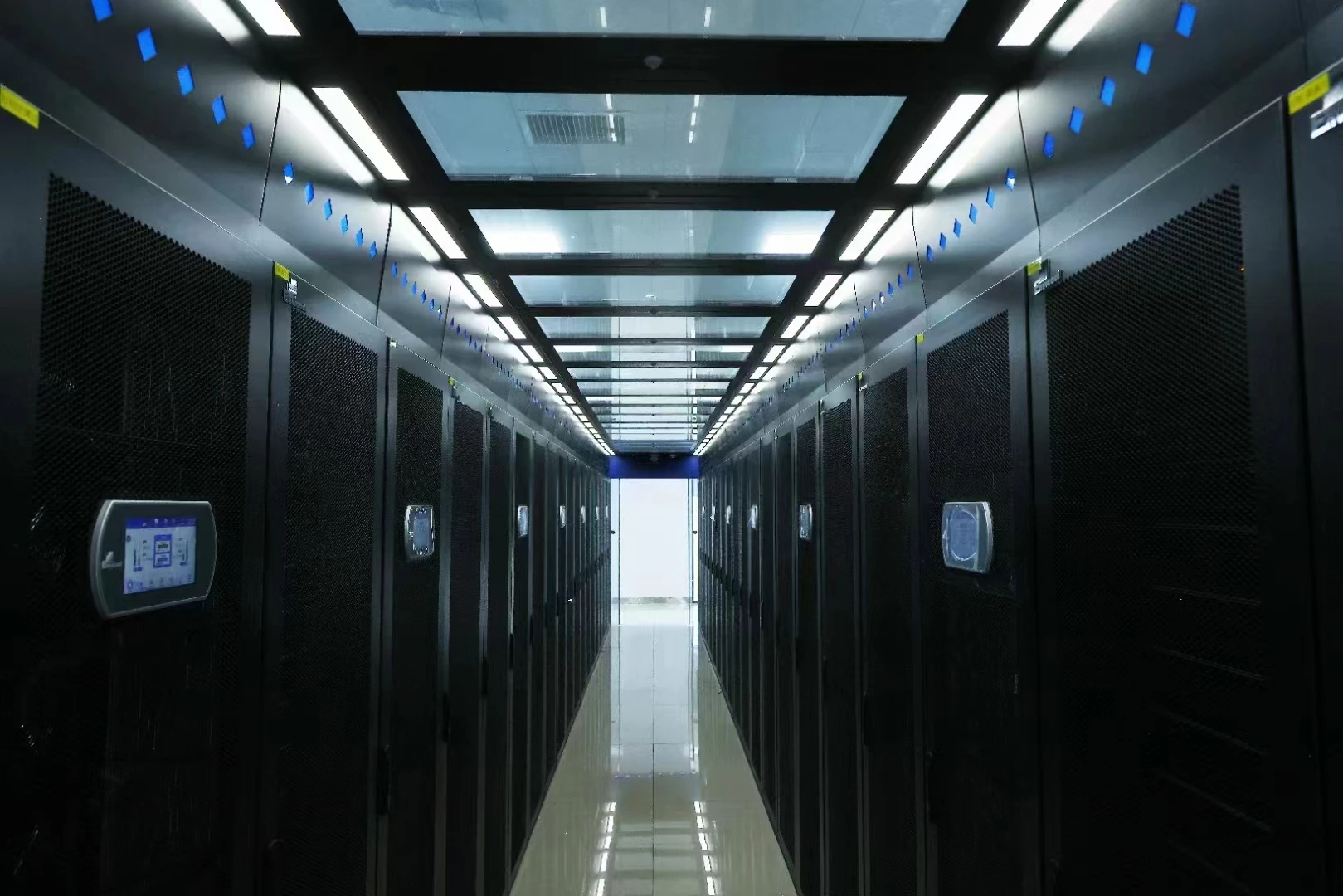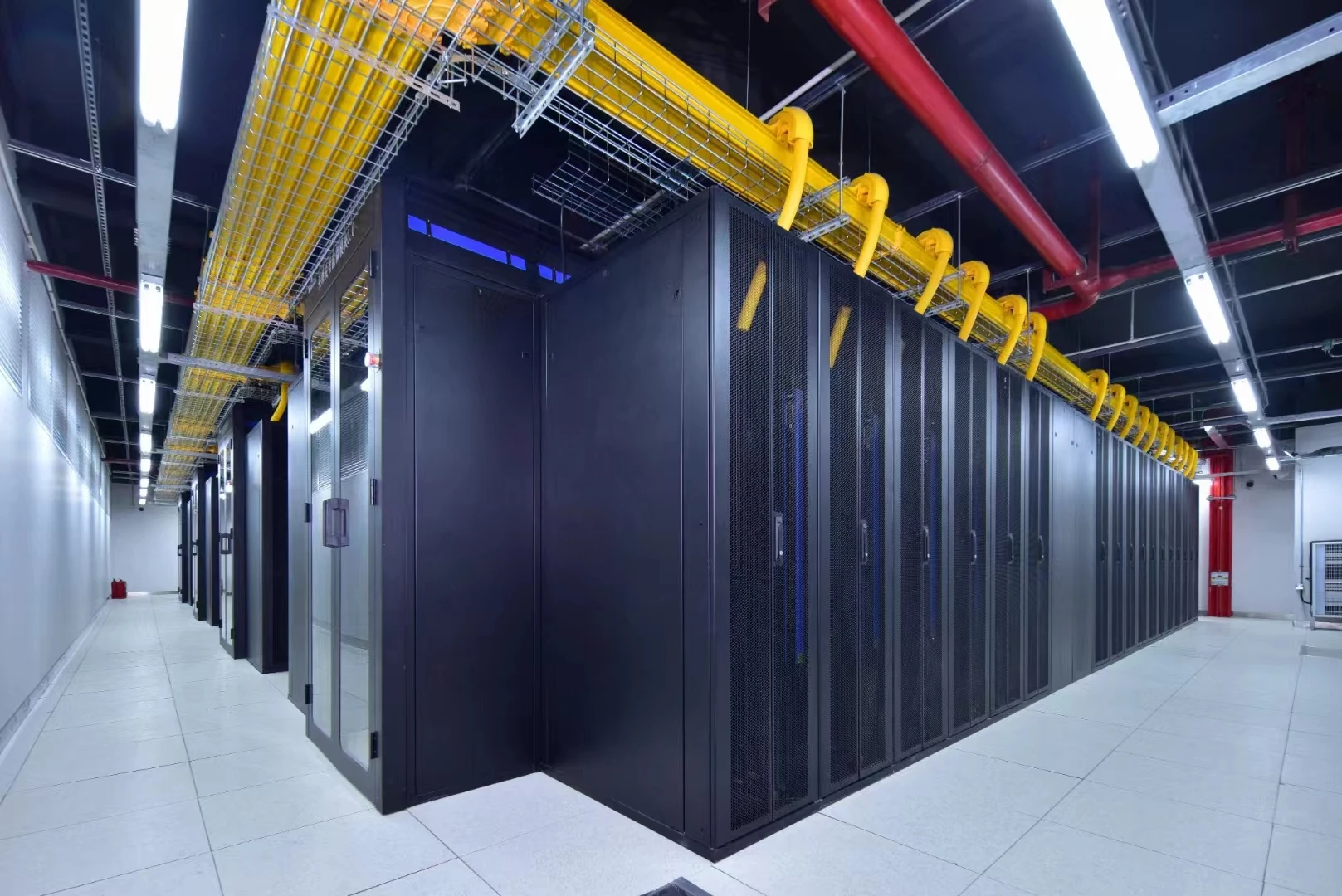
Авг . 28, 2025 01:20 Обратно к списку
Energy Management System: Boost Efficiency & Save Costs
Introduction & Industry Trends in Energy Management
In an era defined by escalating energy costs, increasing environmental regulations, and a pervasive drive for operational efficiency, the strategic implementation of an energy management system has become paramount for B2B enterprises. These sophisticated frameworks are no longer just an option but a critical enabler for sustainability and competitive advantage. Modern industrial and commercial sectors confront complex challenges, including volatile energy markets, the imperative to reduce carbon footprints, and the need for robust, uninterrupted power supply. An advanced energy management system addresses these head-on by providing comprehensive tools for monitoring, controlling, and optimizing energy consumption across diverse operational landscapes.
The industry is witnessing profound transformations driven by the convergence of digital technologies. Key trends include the integration of Artificial Intelligence (AI) and Machine Learning (ML) for predictive analytics, enabling systems to anticipate demand fluctuations and optimize resource allocation proactively. The proliferation of Internet of Things (IoT) devices facilitates granular data collection from myriad points, offering unprecedented visibility into energy usage patterns. Furthermore, enhanced data analytics capabilities are transforming raw data into actionable insights, empowering facility managers and engineers to make informed decisions that translate directly into cost savings and improved energy performance. Regulatory compliance, such as adherence to ISO 50001 standards, also plays a crucial role, pushing organizations towards more structured and auditable energy governance. These dynamics underscore the evolving sophistication of energy control systems and the indispensable role of robust energy monitoring and management system solutions in the contemporary business environment.
Detailed Process Flow for an Система энергоменеджмента Implementation
The successful deployment of an energy management solution involves a structured, multi-phase process designed to ensure seamless integration and optimal performance. This systematic approach guarantees that the solution is tailored to specific operational needs, from initial assessment through continuous optimization.
Phase 1: Assessment & Planning
This initial phase involves a comprehensive audit of existing energy consumption patterns, infrastructure, and operational processes. Data collection encompasses historical utility bills, equipment specifications, operational schedules, and facility layouts. Detailed analysis identifies major energy consumers, peak demand periods, and potential areas for efficiency improvement. Clear, measurable objectives are established, such as target energy reduction percentages, specific cost savings, and carbon emission limits, aligning with international standards like ISO 50001. Material considerations at this stage involve identifying existing metering points and potential locations for new sensor deployments.
Phase 2: Design & Specification
Based on the assessment, a detailed system architecture is designed. This includes selecting appropriate hardware components such as smart meters (e.g., Modbus/RTU, Ethernet/IP compatible), sensors (temperature, humidity, current, voltage, power factor), Programmable Logic Controllers (PLCs) or Remote Terminal Units (RTUs) for local control, and communication gateways. Software specifications cover data acquisition platforms, analytics engines, Human-Machine Interfaces (HMIs), and reporting modules. Emphasis is placed on open standards for interoperability and scalability. Material selection for physical components prioritizes durability, accuracy, and resistance to environmental factors prevalent in target industries.
Phase 3: Manufacturing & Integration
This phase involves the procurement or manufacturing of custom components and their integration. For specialized control hardware, manufacturing processes may include precision casting for robust enclosures, CNC machining for intricate sensor housings, and advanced PCB assembly for control boards. Materials are often industrial-grade, such as corrosion-resistant stainless steel for outdoor sensors or high-grade plastics for interior components, ensuring a service life exceeding 10-15 years under typical operating conditions. Software development involves configuring the data analytics engine, developing custom dashboards, and integrating with existing enterprise resource planning (ERP) or building management systems (BMS).
Rigorous testing standards are applied throughout. Hardware undergoes tests for accuracy, environmental resilience (temperature, humidity, vibration), and electromagnetic compatibility (EMC) in accordance with standards such as IEC 61000 and ANSI C12.20. Software is subjected to functional testing, stress testing, and cybersecurity audits following ISO/IEC 27001 guidelines to ensure data integrity and system reliability. Our systems are often tailored for target industries like petrochemical (requiring ATEX certification for hazardous environments), metallurgy (demanding high-temperature resistance), and water supply & drainage (necessitating robust corrosion resistance). The emphasis on quality manufacturing ensures long-term operational stability and reduced maintenance costs.
Phase 4: Deployment & Commissioning
Hardware components are installed at designated points, and communication networks (e.g., Ethernet, Wireless M-Bus, LoRaWAN) are established. Software platforms are deployed on local servers or cloud infrastructure. Commissioning involves calibrating sensors, verifying data accuracy, and thoroughly testing the entire system's functionality. This includes validating data flow from end devices to the central platform, testing control commands, and ensuring alarm notifications operate correctly. Comprehensive user training is provided to facility staff and engineers to ensure effective system operation and maintenance.
Phase 5: Operation & Optimization
Once operational, the system continuously monitors energy usage, identifies anomalies, and generates performance reports. Leveraging advanced analytics, the system provides insights into areas for continuous improvement. This includes identifying opportunities for load shedding, power factor correction, and scheduling optimization. Regular performance reviews and software updates ensure the system remains aligned with evolving operational requirements and technological advancements. The advantages in typical application scenarios are pronounced: significant energy savings (often 10-30%), enhanced equipment reliability, and superior corrosion resistance due to material selection, leading to reduced maintenance and extended asset lifecycles.

Technical Specifications and Core Components of an Система энергоменеджмента
A robust energy management solution is architected around several core technical layers designed for comprehensive monitoring, analysis, and control. Understanding these components and their specifications is crucial for B2B decision-makers.
System Architecture
- Data Acquisition Layer: Comprising smart meters (electricity, gas, water), various sensors (temperature, humidity, pressure, current transformers, voltage transducers), and Remote Terminal Units (RTUs) or Programmable Logic Controllers (PLCs). These devices gather real-time data from assets and utility points.
- Communication Layer: Securely transmits data using diverse protocols such as Modbus TCP/IP, BACnet, OPC UA, MQTT, and industrial Ethernet. Both wired (fiber optic, Ethernet) and wireless (LoRaWAN, Zigbee, Wi-Fi, 5G) networks are utilized for reliability and flexibility.
- Data Processing & Storage Layer: Central servers (on-premise or cloud-based) equipped with powerful processors and scalable storage (e.g., time-series databases) handle the ingestion, validation, and storage of vast datasets.
- Analytics & Control Layer: Software platform with advanced algorithms for pattern recognition, anomaly detection, predictive modeling, and optimization. This layer also houses the control logic for automated adjustments to equipment.
- Visualization & Reporting Layer: User-friendly dashboards, HMI (Human-Machine Interface), and customized reporting tools that present actionable insights to operators, engineers, and management.
Key Technical Parameters (Example)
| Параметр | Description | Typical Specification |
|---|---|---|
| Measurement Accuracy | Precision of energy metering devices (current, voltage, power) | Class 0.2S for revenue metering, Class 0.5 for sub-metering (IEC 62053) |
| Communication Protocols | Supported communication standards for data exchange | Modbus TCP/IP, BACnet/IP, OPC UA, MQTT, SNMP, DLMS/COSEM |
| Data Logging Interval | Frequency at which data points are recorded | 1 second to 15 minutes, configurable per data point |
| System Response Time | Latency between data acquisition and display/control action | Typically |
| Scalability | Ability to expand system capacity (data points, locations) | Supports thousands of devices and multiple sites with cloud architecture |
| Security | Data encryption, access control, cybersecurity compliance | TLS 1.2+, OAuth 2.0, ISO/IEC 27001 compliant architecture |
These specifications ensure that the energy management solution provides reliable, accurate, and secure data for effective energy decision-making. High-precision metering and robust communication are fundamental to achieving the desired energy efficiency and operational excellence.
Application Scenarios & Technical Advantages of an Система энергоменеджмента
The versatility of a well-implemented energy management solution allows for its application across a broad spectrum of B2B environments, delivering distinct technical and financial advantages.
Key Application Scenarios
- Industrial Facilities: In manufacturing plants, petrochemical refineries, and metallurgy operations, EMS enables precise monitoring of high-demand processes (e.g., furnaces, motors, HVAC for critical zones). It facilitates load balancing, demand-side management to avoid peak surcharges, and optimization of production schedules to align with off-peak energy rates. The integration with a Micro module computer room allows for efficient management of IT infrastructure energy within these complex industrial environments.
- Commercial Buildings: For office complexes, shopping malls, and data centers, an EMS monitors lighting, HVAC, elevators, and IT equipment. Advantages include automated climate control based on occupancy, optimized lighting schedules, and proactive identification of inefficient equipment. For a data center housed in a micro module computer room, the EMS offers real-time Power Usage Effectiveness (PUE) monitoring, cooling optimization, and server load management, crucial for maintaining uptime and reducing operational expenditure.
- Utilities & Smart Grids: EMS solutions are vital for demand response programs, grid stability, and integrating renewable energy sources. They facilitate real-time monitoring of substations, feeder lines, and distributed generation assets, enabling proactive fault detection and intelligent load balancing.
- Water Supply & Drainage: In water treatment plants and pumping stations, EMS optimizes pump scheduling and motor efficiency, significantly reducing the energy intensity of water infrastructure. Corrosion resistance, inherent in the materials specified during our manufacturing process, ensures the longevity of sensors and control units in these often-harsh environments.
Technical Advantages
- Significant Energy Savings: By identifying and rectifying inefficiencies, our solutions typically deliver 10-30% reduction in energy consumption, leading to substantial cost savings. Data from the U.S. Energy Information Administration (EIA) indicates that industrial sectors alone can save billions annually through optimized energy use.
- Enhanced Operational Visibility: Real-time dashboards and detailed historical data provide unparalleled transparency into energy flows, allowing for informed decision-making and rapid response to anomalies.
- Predictive Maintenance: Monitoring energy signatures of equipment can detect impending failures before they occur, reducing unplanned downtime and maintenance costs. For instance, a sudden spike in motor current consumption might indicate bearing wear.
- Regulatory Compliance & Reporting: Automated reporting tools simplify adherence to environmental regulations (e.g., carbon emission limits) and energy performance standards (e.g., ISO 50001).
- Improved Power Quality: Monitoring harmonics, voltage sags, and swells allows for proactive measures to protect sensitive equipment and extend its service life.
- Corrosion Resistance & Durability: Leveraging high-quality materials and robust manufacturing techniques ensures our EMS components and associated infrastructure, like micro module computer rooms, withstand harsh environmental conditions, a crucial advantage in sectors such as chemical processing or marine applications.

Vendor Comparison & Market Landscape for Energy Management Systems
The market for energy management solutions is dynamic, featuring a range of providers from large conglomerates to specialized technology firms. Differentiating between vendors requires a nuanced understanding of their core offerings, technological strengths, and service models.
Energy Management System Comparison Table
| Feature/Aspect | Vendor A (Generic Large Provider) | Vendor B (Specialized Software Firm) | Our Solution (ACDC BESS Micro Module & EMS) |
|---|---|---|---|
| Core Focus | Broad industrial automation, general EMS | Software analytics, cloud-based EMS | Integrated hardware & software, specific focus on critical infrastructure like micro-module data centers and industrial applications |
| Hardware Integration | Proprietary hardware ecosystem | Third-party hardware compatibility (limited) | Seamless integration with our high-quality micro-module computer rooms; open to third-party devices via standard protocols |
| Software Capabilities | Standard dashboards, rule-based automation | Advanced AI/ML analytics, predictive features | Comprehensive data analytics, customizable dashboards, AI/ML for predictive optimization, deep integration with facility management systems |
| Customization & Scalability | Limited customization, enterprise-level scaling | Highly customizable software, cloud-native scalability | Modular design for both hardware & software; extensive customization for specific industry needs; scalable from small sites to multi-national operations |
| Deployment Model | On-premise favored | Cloud-first approach | Hybrid (on-premise for critical control, cloud for analytics/reporting) or fully tailored options |
| Technical Support | Tiered support, often generalized | Strong software support, hardware limitations | Dedicated 24/7 technical support, on-site expertise, comprehensive training and lifecycle management for both hardware & software |
Our differentiation lies in providing a holistic, integrated solution that combines robust, custom-engineered hardware with advanced, adaptable software. This is particularly advantageous for B2B clients who require not just software analytics, but also reliable, purpose-built physical infrastructure, such as our micro module computer rooms, that are designed for maximum efficiency and longevity in demanding industrial environments. We pride ourselves on deep industry expertise, ensuring solutions are not merely generic but precisely aligned with sector-specific challenges and regulatory requirements.
Customized Solutions & Application Case Studies for an Система энергоменеджмента
Recognizing that no two enterprises have identical energy profiles or operational constraints, we specialize in delivering highly customized energy management solutions. Our modular approach ensures that clients receive a system precisely aligned with their unique requirements, fostering optimal performance and maximum return on investment.
Approach to Customization
- Modular Hardware & Software Design: Our systems are built on a modular architecture, allowing for flexible component selection—from specific types of smart meters and sensors to specialized control modules and communication gateways. Software dashboards and reporting templates are fully customizable to display the most relevant KPIs for individual stakeholders.
- API Integration: Seamless integration with existing Building Management Systems (BMS), Enterprise Resource Planning (ERP), and Manufacturing Execution Systems (MES) is achieved through robust API interfaces, ensuring data fluidity across disparate platforms.
- Tailored Analytics & Reporting: Development of bespoke algorithms for specific energy optimization challenges (e.g., process-specific energy consumption benchmarks, waste heat recovery optimization) and custom report generation for regulatory compliance or internal auditing.
- Industry-Specific Configurations: Deep expertise in target industries (e.g., petrochemical, data centers, water utilities) enables us to pre-configure systems with relevant compliance checks, safety protocols, and operational workflows.
Application Case Study: Large Industrial Manufacturing Plant
Client: A leading automotive component manufacturer with multiple production lines and a significant energy footprint.
Challenge: The client faced high peak demand charges, limited visibility into energy consumption per production line, and a mandate to reduce carbon emissions by 15% within three years. Existing metering was rudimentary, and energy data was siloed.
Solution: We deployed a comprehensive energy management solution integrated with their existing SCADA system. This involved installing over 200 smart meters on critical equipment (CNC machines, robotics, HVAC systems), deploying temperature and humidity sensors in sensitive areas, and implementing a centralized analytics platform with custom dashboards. Our solution incorporated demand-side management algorithms that automatically shed non-critical loads during peak tariff periods and optimized compressor operation based on real-time air demand.
Results:
- Energy Cost Reduction: Achieved an average 18% reduction in electricity costs within the first 12 months, primarily due to peak demand shaving and optimized equipment scheduling.
- CO2 Emission Reduction: Contributed to a 16% reduction in Scope 2 emissions, surpassing their initial target.
- Operational Efficiency: Improved equipment uptime by 5% through predictive maintenance alerts, reducing unplanned stoppages.
- Enhanced Reporting: Automated generation of ISO 50001 compliant energy performance reports, significantly streamlining auditing processes.

Our company brings decades of collective experience in designing, manufacturing, and deploying robust industrial solutions. We hold ISO 9001 and ISO 14001 certifications, underscoring our commitment to quality management and environmental performance. Our partnerships with leading technology providers and a proven track record of successful client engagements across diverse sectors further solidify our authoritative standing in the energy management market.
Trustworthiness: FAQs, Lead Time, Warranty & Support
Frequently Asked Questions (FAQs)
Q1: What is the typical ROI period for an energy management system?
A1: While specific ROI varies by industry and initial investment, our clients typically observe a return on investment within 18-36 months, driven by significant energy cost reductions and improved operational efficiency.
Q2: Can your EMS integrate with our existing legacy systems?
A2: Yes, our systems are designed with high interoperability. We support a wide array of industrial communication protocols (Modbus, BACnet, OPC UA) and offer custom API development to ensure seamless integration with most legacy SCADA, BMS, and ERP systems.
Q3: How secure is the data collected by the system?
A3: Data security is paramount. Our systems employ end-to-end encryption (TLS 1.2+), role-based access control, and adhere to international cybersecurity standards (e.g., ISO/IEC 27001). Regular security audits and updates are part of our maintenance protocols.
Q4: What kind of infrastructure is required for deploying an EMS?
A4: Requirements vary. For hardware, it depends on the number and type of monitoring points (meters, sensors). For software, it can range from a dedicated on-premise server to a fully cloud-based solution. Our team conducts a thorough site assessment to determine the optimal infrastructure for your specific needs, often leveraging efficient solutions like our Micro Module Computer Room for core IT infrastructure.
Q5: How does your solution support renewable energy integration?
A5: Our system excels at integrating and optimizing renewable energy sources (solar PV, wind, battery storage). It provides real-time generation monitoring, predictive analytics for resource forecasting, and intelligent dispatching capabilities to maximize self-consumption and grid interaction efficiency.
Lead Time & Fulfillment
Our project lead times are determined by the scope and complexity of the EMS deployment. For standard deployments, the lead time from project initiation to full commissioning typically ranges from 12 to 24 weeks. This includes detailed design, hardware procurement and manufacturing, software development/configuration, installation, and rigorous testing. Customized or large-scale industrial projects may require extended timelines, which are clearly communicated and mutually agreed upon during the planning phase. We maintain transparent communication throughout the entire fulfillment process, providing regular updates and dedicated project management.
Warranty Commitments
We stand behind the quality and reliability of our EMS components and software. All hardware components carry a standard 2-year warranty against manufacturing defects. Software licenses include a 1-year warranty for bug fixes and updates. Extended warranty and service level agreements (SLAs) are available to provide continuous protection and support beyond the initial warranty period, ensuring your system operates optimally for its entire service life.
Customer Support
Our commitment to customer success extends far beyond deployment. We offer multi-tiered customer support options:
- 24/7 Technical Support Hotline: For critical issues, our expert support team is available around the clock.
- Remote Monitoring & Diagnostics: Our team can securely access and diagnose system performance remotely, often resolving issues before they impact operations.
- On-site Support & Maintenance: For complex hardware issues or scheduled preventive maintenance, our certified technicians can be dispatched to your facility.
- Regular Software Updates & Training: We provide continuous software enhancements and offer refresher training sessions to ensure your team is proficient with the latest system functionalities.
Conclusion
The deployment of an advanced energy management system is a strategic investment that yields tangible benefits in operational efficiency, cost reduction, and environmental stewardship. By leveraging cutting-edge technology, comprehensive data analytics, and a robust, customizable framework, businesses can navigate the complexities of modern energy consumption, ensuring resilience and sustainable growth. Our integrated solutions, including specialized infrastructure like the Micro Module Computer Room, are engineered to provide unparalleled performance and reliability, empowering enterprises to take full control of their energy future.
References
- U.S. Energy Information Administration (EIA). "Manufacturing Energy Consumption Survey (MECS)." Accessed August 2024.
- International Organization for Standardization (ISO). "ISO 50001:2018 Energy management systems – Requirements with guidance for use."
- International Electrotechnical Commission (IEC). "IEC 62053 series: Electricity metering equipment (AC) – Specific requirements."
- International Electrotechnical Commission (IEC). "IEC 61850 Communication networks and systems for power utility automation."
- International Organization for Standardization (ISO). "ISO/IEC 27001:2022 Information security management systems – Requirements."
Это последняя статья
-
Energy Management System: Boost Efficiency & Save Costs
НовостиAug.28,2025
-
Portable Battery Power Station Revolutionizing Clean Energy Solutions
НовостиAug.23,2025
-
The Future of Mobility Relies on Advanced DC EV Charging Stations
НовостиAug.23,2025
-
Future Proof Facilities Using EMS Energy Monitoring System
НовостиAug.23,2025
-
Intelligent EV DC Fast Charging Stations Power Tomorrows Mobility
НовостиAug.23,2025
-
Revolutionizing Power Management with Advanced Energy Storage Cabinet Solutions
НовостиAug.23,2025























